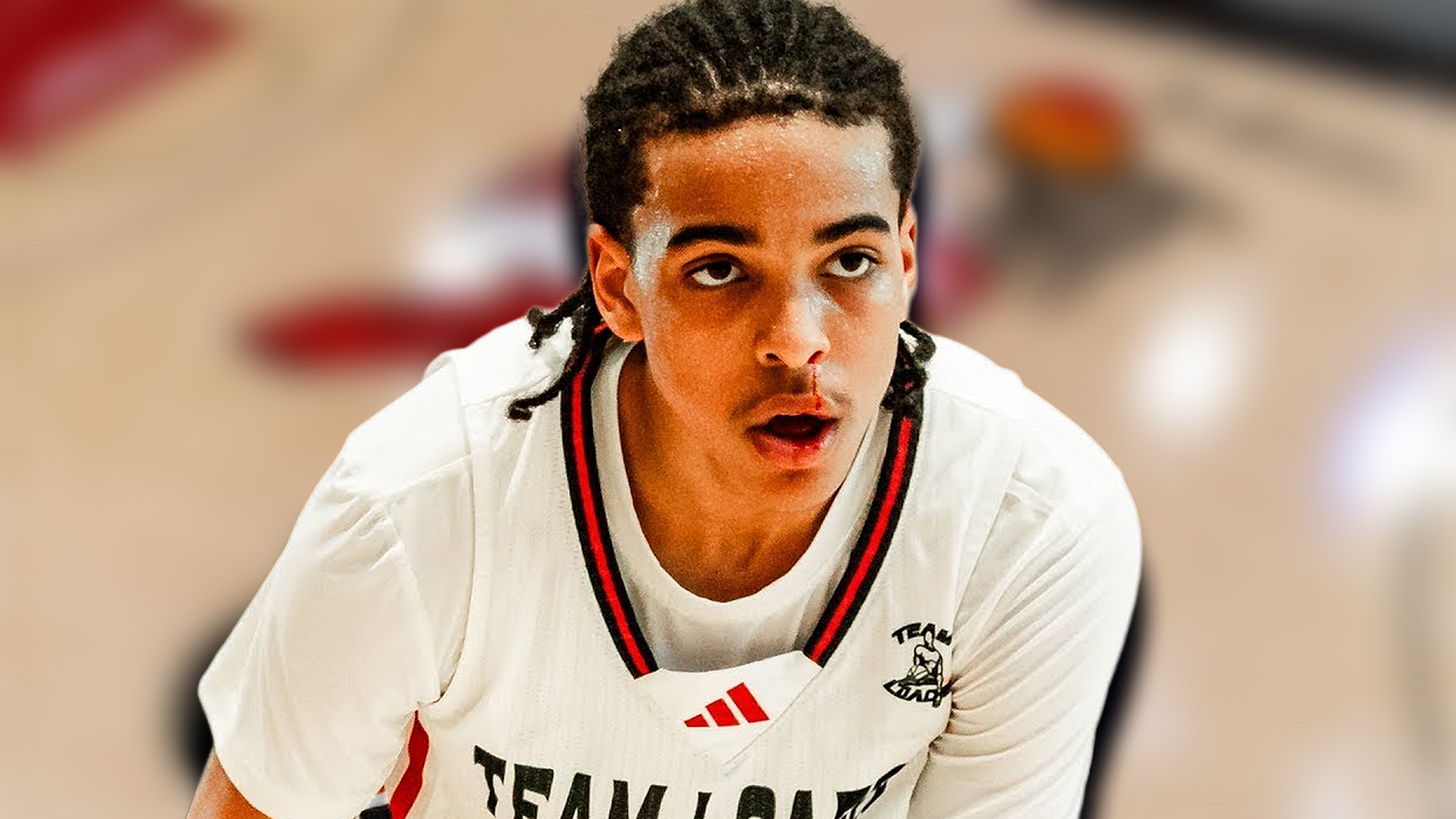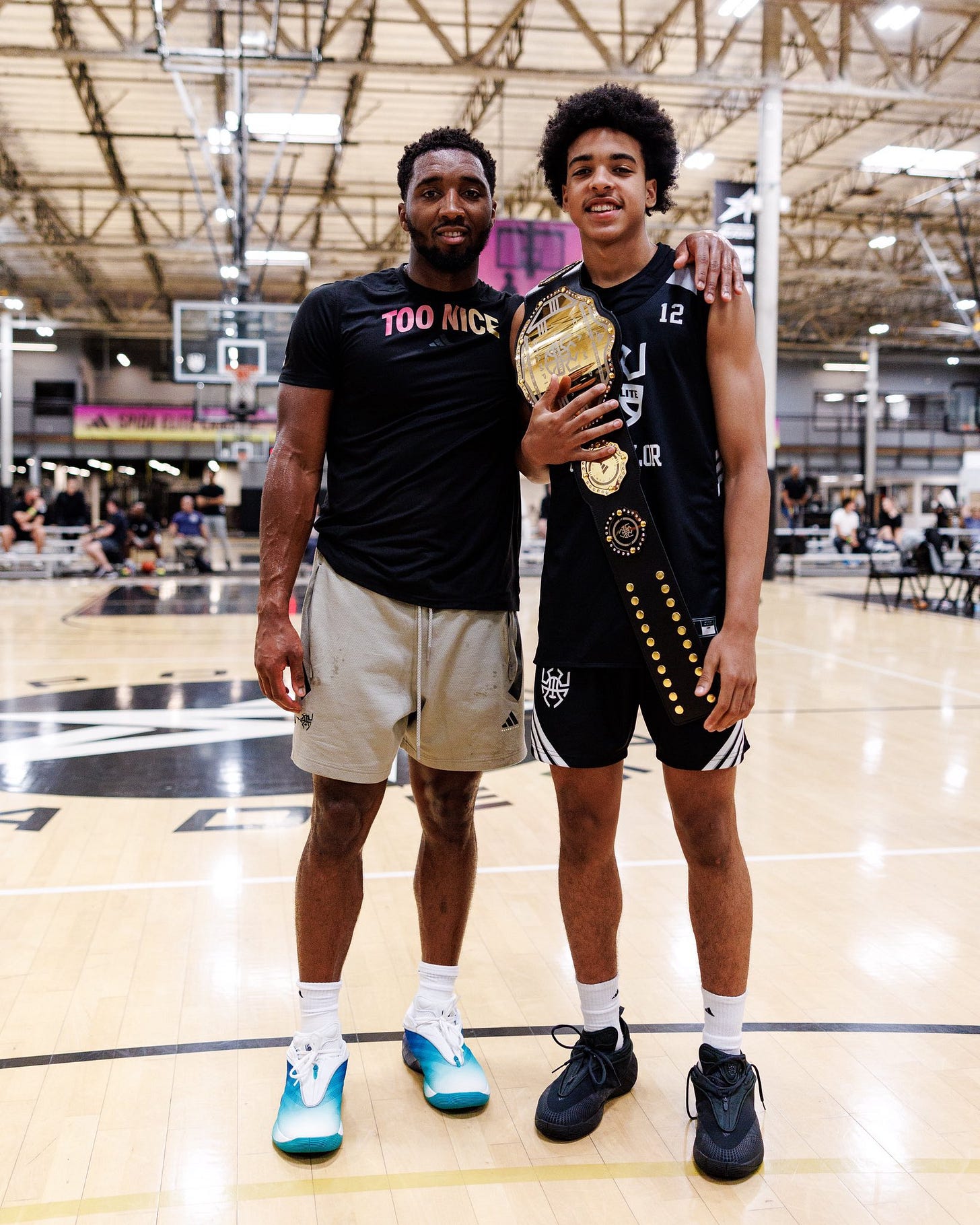Is Mikel Brown worthy of a Top Five Pick in 2026?
Mikel Brown lit the FIBA U19's on fire last month and put the world on notice. His performance staked his claim as top 5 pick in the 2026 class.
From the early 2000s to the late 2010s, Louisville courted some of the best guards in college basketball.
The Rick Pitino era saw the likes of Reece Gaines, Russ Smith, Terry Rozier and Donovan Mitchell.
In the seven years since Pitino departed, that level of guard play has been few and far between.
Chucky Hepburn restored the feeling last year, but the Cardinals’ best guard talent since Mitchell arrived on campus this summer.
When Mikel Brown stepped foot into Louisville, he became the second-highest recruit in the school’s history— and for good reason.
Brown, the son of two college athletes, grew from 5-foot-10 as a freshman to 6-foot-4 in his senior year. The added size and subsequent athleticism bolstered his pre-draft profile as a guard with the potential to play the one or two.
The Orlando, Florida, native continued to grow his stock when he lit the world on fire during FIBA U19 competitions in Switzerland last month. Brown averaged 14.9 points per game and 6.1 assists (2.87 AST/TO ratio) on 63 true shooting percentage and shot 47.6 percent from three on six attempts per game.
Now, almost everywhere you look, Brown can be found in consideration for a top-five pick, and some outlets have him as high as pick four.
Here’s why.
Bombs away
It takes about two seconds to watch Brown’s film to understand why scouts love him.
The guard has nuclear shooting potential, which was on display en route to his second gold medal. As previously mentioned, Brown shot 47.6 percent over seven games during U19, but what stood out to me was his confidence in his shooting.
According to Cerebro Sports, Brown shot 35 percent from behind the arc over a 113-game sample during high school, but I don’t think that data point tells the entire story.
Percentages are notable but don’t accurately depict a player’s shooting acumen (especially at the high-school level). Volume (54.7 three-point rate) and distance are more significant in terms of how teams defend players and the spacing they provide. Brown has also improved as a shooter over the last 14 months, dating back to his final AAU season.
If he continues that improvement, I’d suggest picking Brown up as he crosses half-court.
Because of his shot depth, Brown’s shooting ability has the chance to warp defenses. His ability to knock down above-the-break threes will spread the defense horizontally, creating advantages and rolling lanes for his big man.
In addition to his on-ball shot-making, Brown has also shown the ability to come off of pin-down and flare screens when playing next to another ball-handler.
The second part of Brown’s sell as a top pick is his playmaking. The guard is an excellent pick-and-roll operator who processes the floor well and can make every pass in the book.
Brown is cerebral. He plays on time, does not hold the ball long, and makes quick and easy reads when his teammates are in advantageous spots on the floor.
The guard averaged 5.6 AST per 40 during his high-school career with a 1.8 AST/TO ratio, but even on many of his turnovers, he has the right idea, but would throw an errant pass, or a teammate isn’t ready for the delivery.
The rising freshman combines a dynamic handle with long strides to get downhill and create for others.
Brown also looks to push the pace and is a great transition passer (one of the more under-discussed aspects of playmaking).
I understand why evaluators view Brown that highly. His intersection of shooting, size and playmaking ability is tantalizing. Guards with his level of shot-making and live-dribble processing don’t grow on trees—especially ones who may have grown into a legitimate 6-foot-4-ish frame.
I can see his upside as an NBA-level creator who can be a conduit for good offense and hurt defenses from three.
But a few things are holding me back from putting him squarely in the top-five conversation just yet.
Let’s wait and see
While Brown’s shooting and passing foundation is undeniably strong, two areas currently give me pause: his struggles with two-point scoring—particularly finishing at the rim—and his limited impact defensively.
Brown doesn’t shy away from contact—he’s willing to get into the paint and challenge defenders—but he often struggles to finish through it. In traffic, he doesn’t always generate a lot of lift, especially when jumping off two feet, which can lead to tough angles or altered shots around the rim.
His touch around the basket is solid, and he has a nice floater game, but the efficiency hasn’t followed yet (41.7% in the half-court), and I think it hurt his overall field goal percentage in high school.
I don’t think a lack of aggression causes Brown’s inconsistency at the rim. Instead, a combination of physical development and technical refinement is still catching up to his size.
The guard grew seven inches and four years (he could still be growing) and has put on a good amount of muscle since he set foot in Louisville.
Here he is standing next to Mitchell, who appears to be about 2-3 inches shorter than him.
Some improvement in his finishing repertoire could be seen during his senior season and the U19s, when he got more lift on his finishes and looked much more explosive than in his OTE days.
While Brown continues to grow as a rim finisher, he can lean on a growing in-between game. He’s shown the ability to knock down floaters and get to mid-range in the pick-and-roll, which could be a viable counter to his three-point shooting.
Defensively, the concerns about physicality are more pressing. Brown has yet to impact games on that end consistently. He doesn’t generate a lot of turnovers, and his slight frame—paired with a relatively average +2 wingspan—raises questions about his ability to contain stronger guards or switch onto bigger offensive players on the next level.
For Brown to become an adequate NBA defender, he must add muscle and be more physical at the point of attack to avoid getting blown by. The guard also needs to improve his screen navigation (a common theme for high-school players) to avoid getting behind plays and putting his centers in two-on-one situations.
Next in Line
There’s no mystery why Mikel Brown is drawing top-five buzz. His blend of deep shooting, floor mapping and positional size gives him one of the most intriguing offensive profiles in the class. He’s already proven he can perform on a big stage, and his development over the past year suggests there's still more to come.
But before I can comfortably place him in those high-lottery conversations, I need to see him check a few more boxes.
How he handles physicality—both as a finisher and defender—will be a significant swing factor. Improving his ability to finish through contact, showing functional athleticism, and asserting himself defensively are all areas that could take his projection to the next tier.
Brown has every chance to justify the hype if he continues to grow in those areas while maintaining his shooting and playmaking impact. For now, I see the upside—but I’m still in wait-and-see mode.
I’ll be anxious to watch him carry the torch from other Louisville guards this season.




Have him 4th for now behind Boozer, Peterson, and Dubantsa